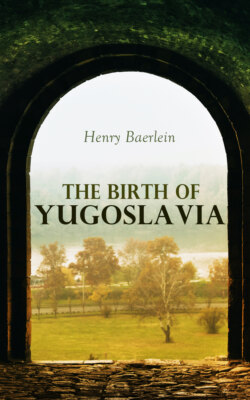Читать книгу The Birth of Yugoslavia - Henry Baerlein - Страница 31
На сайте Литреса книга снята с продажи.
GOOD LIVING IN HUNGARY
ОглавлениеAnd always we hear that those in the Banat and those in the still more fertile province of Bačka, to the west of it, or those who had gone even farther west, into the wine-growing hills of Baranja, had no reason to regret their enterprise. King Matthew Corvinus of Hungary writes to the Pope on the 12th of January 1483, informing him that 200,000 Serbs have come into the Banat and Bačka since 1479. He adds that he is favourably disposed towards them, as they are a fighting race of the first order, so that he can trust them to defend those provinces against the Turk. … Not only, therefore, did he bestow upon them exceptional privileges, but in 1471 he appointed Vuk, the grandson of George Branković, to be Serbian despot of southern Hungary. This newly organized dominion on the left bank of the Danube and the Save was much more important than those of Transylvania or of Szekeliek, which were held by Hungarian magnates and which, in the event of war, had to furnish, each of them, four hundred horsemen, whereas the Serbian despot undertook to furnish a thousand.
The earliest Serbian settlement in Baranja appears to have consisted of natives of the Morava valley who came in 1508 to a district near Ciklos. The king made over the castle of Ciklos to their leader, Stephen Stiljanović, called the Just, and when the Turks broke into Baranja they murdered him. History[25] relates that some years after this on the 14th of August the pasha, a man of Serbian origin, commanded that the corpse be exhumed; whereupon a ring on the dead man's finger proved that he was related to the pasha. According to the Turkish rules of that period it was illegal to celebrate the Mass except at night, and in the open air. Now every year on the night of the 14th of August a Mass is sung, with the congregation holding torches and candles, out on the side of a hill. Afterwards they dance, and so forth.
However, it was the Banat to which the Serbs chiefly rallied, and after the fall of the fortress of Belgrade in 1521 they came in such multitudes that large portions of it had an exclusively Serbian character. And they were given the sole charge of defending it, while the Hungarians retired to the north. But Hungary herself went down at the terrific battle of Mohács—10,000 Serbs under their voivoda, Paul, fought in the Hungarian ranks—and after the fall of Buda-Pest the political organization of the Serbs, with a despot as their ruler, came to an end, being replaced by a religious organization, at the head of which was the restored Patriarchate of Peć. The diocese which the Patriarchs from their not very accessible monastery were supposed to administrate included all the Serbs between Monastir and Buda-Pest, and from the Adriatic to the Struma River. It was at this time that in the other Yugoslav lands, to the west and north, there came a breath of wind from the Reformation.
